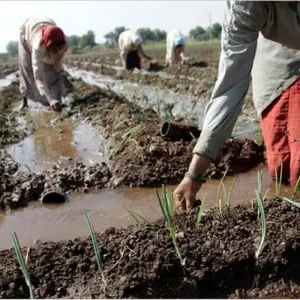As a follow up of the POST COVID business environment that is developing, on the instructions of the Hon’ble Prime Minister Eleven Empowered Groups have been constituted which would be exclusively focusing on issues pertaining to supply chain and logistics. The key functionality assigned to the group was to oversee and remove all the operational hurdles associated with the supply chain so that logistics operations as an end to end solution functioned efficiently without any hiccups.
Robust data system has been set up to monitor the progress the logistics right from its movement from the godowns till its destination and a dashboard has been set up to monitor real time progress. For the first time such a focused attention has been paid to the logistics sector to ensure that the goods reach the desired destinations and facilitate the end user, be it the business entity or the consumer.
This was perfect opportunity to build up a system of traceability for the products being transported from the point of pick up to the point of delivery. In the present times when the quality of a product has become circumspect, the component of traceability embedded into the system would go a long way in instilling confidence in the end user.
Let me illustrate it with an example. The other day I purchased Pears which were looking perfectly fine from outside. When I cut it to eat, it was reeking of residual pesticides component which must have been added either in the Godown or during transportation to enhance the shelf life, but in the bargain it also destroyed the taste and texture of the product.
Traceability is a flow chart that traces the flow of food from production to processing via the distribution stage. It also is an effective tool to pin-point the contamination that food might have undergone at a particular stage.
As a matter of fact, traceability is the navigation path of a food product or its GPS so to say which facilitates in plugging the loopholes of the system and ensures that for the end user the product is safe to be consumed.
As per the Food Recall Regulation Procedure 2017 for India, Farm to Fork traceability has to be put into the system. But its implementation is more in the realm of theory than in practice in India. May be the apathy could be on account of the notion that it is a costly proposition, or lack of knowledge about its importance and an amnesia about Food Safety.
Wherever there are instances of implementation of the component of traceability it is only up to the distributor level or one level down in the supply chain and then it is a Byzantine maze. But should we despair about the situation?
Not exactly, as advancement of technology has ensured now that traceability can easily be identified and AgNext is leading the initiative to facilitate traceability along with quality testing at each transactional point in an easy and cost effective manner. It is high time the element of traceability is embedded firmly into the food chain management system and the present times should be used as the platform to propagate about it in a rigorous manner and establish it as an integral part of protocol of the food system construct.
Nalin










